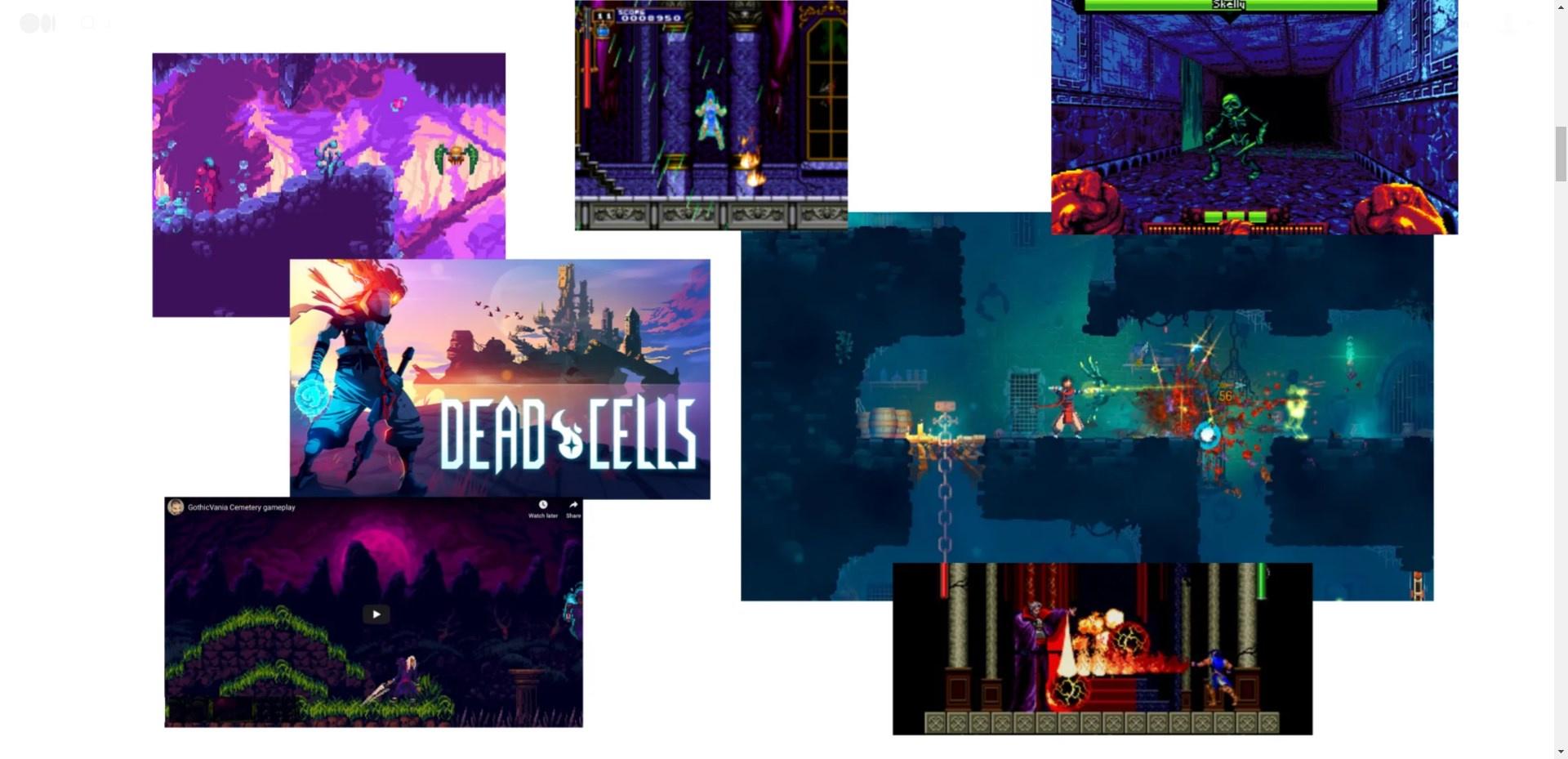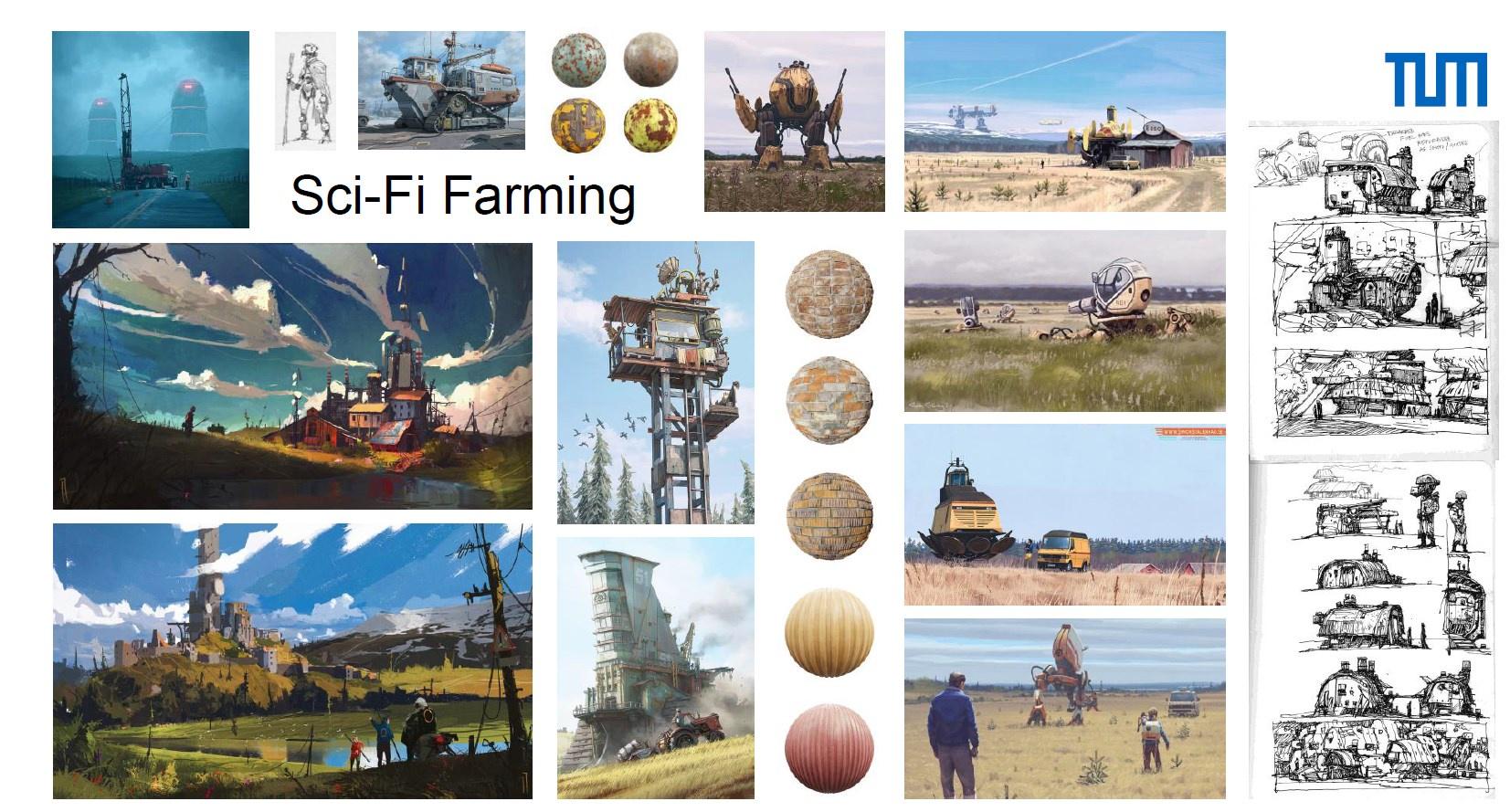Mood Boards
also known as:
Classification
#method #process/planning #medium/visual #medium/collection
Intent
- Convey a visual aesthetic or key concept for your game.
- Communicate your feature ideas visually.
- Convey the mood or atmosphere of your level.
Problem
- How does one decide on the mood and aesthetic for your level?
- How to effectively communicate and share your vision with your team?
- There’s a need for a communication and coordination medium.
- You want to expand your creative horizons and foster autonomy.
- You want to find a starting point and continue your work effectively.
Solution Approach
- Use references as a tool to express your ideas through visual cues and existing examples.
- Find inspiration in games, art, and real-life references.
- Colors and abstract images can help solidify your vision.
- Utilize existing objects as a foundation for your creativity and vision.
- “Visual and material artifacts support creativity and coordination.” (Endrissat et al., 2016)
Application
Input
- Any visual data that aligns with your vision.
- Sources can include games, art, real-life imagery, movie scenes, colors, and more.
- For example, snippets from the world of Pandora (Avatar, 2009) can inspire your own alien world, artwork from “Journey” (2012) can set the mood for an isolated place, Greek architecture can influence a ruin dungeon in your game.
- Allowable sources encompass various visual assets: Digital paintings, traditional art, photographs, sketches, concept art, blueprints, screenshots, games, videos, GIFs, materials, textures, colors, shapes, models, sounds, music, voices, and dialogues (including audio cues).
Application
- Collect all the visual data and compile it into a folder, collage, or a general collection.
- You can mix, edit, or leave the visual data as they are.
- Store them in an easily accessible location for your team, considering whether others should participate in the collection process or if you prefer to present your ideas.
Output
- A mood board that conveys a specific tone, aesthetic, and mood, effectively communicating your vision through visuals.
- Collection
When to Use It
- When you want to convey and share your vision.
- When you need to coordinate and collaborate on a shared aesthetic and vision.
- To spark creativity and enable a collaborative exploration of the game’s visual direction.
- Throughout the planning process, and as a reference to maintain your initial concept.
Relevant Roles Using This Model
Relevance in the Following Processes
- Game Development during the planning process.
- Gamespace Prototyping to clarify your creative goals.
- Combat Design to design the enemy types and their aesthetics.
Applicability
- As a coordination tool: Define the scene, provide an aesthetic direction, and offer references.
- For creative freedom: Gather ideas, invite diverse interpretations, seek inspiration, express your vision, and discover your game’s signature aesthetic.
- Remember that it serves as a reference and should not be used for direct copying. Instead, let it inspire you rather than hinder your creativity with existing material.
Pros and Cons
Pros:
- Provides a starting point, making it easier to begin with existing material.
- Expands your creative thinking and encourages exploration.
- Serves as a communication and coordination tool, helping artists and designers align their direction.
Cons:
- Not practical or testable; it primarily addresses artistic direction and creativity.
- Limited to visual and auditory cues (although books can also be part of a mood board)
Relation with other Methods
- Reference Collection
- Referenced in a Game Design Document
- Defines the look of the game world and is used by Drawing a Map
- Can be influenced by Lenses
- Influences Symbols and Visual Language
Examples
-
A Mood Board proposal for concept art of a game, created by Eduardo
 _(Source: link)
_(Source: link)
Relevant Tools
- #tools/digital Digital Art Tools , Digital Collection Tools (Pinterest) (Artstation)
- #tools/non-digital Non-digital Design Tools (Sketches & Drawings)
Relevant Literature
Visual organizing - Balancing coordination and creative freedom via mood boards
...
 (Sources:
(Sources: